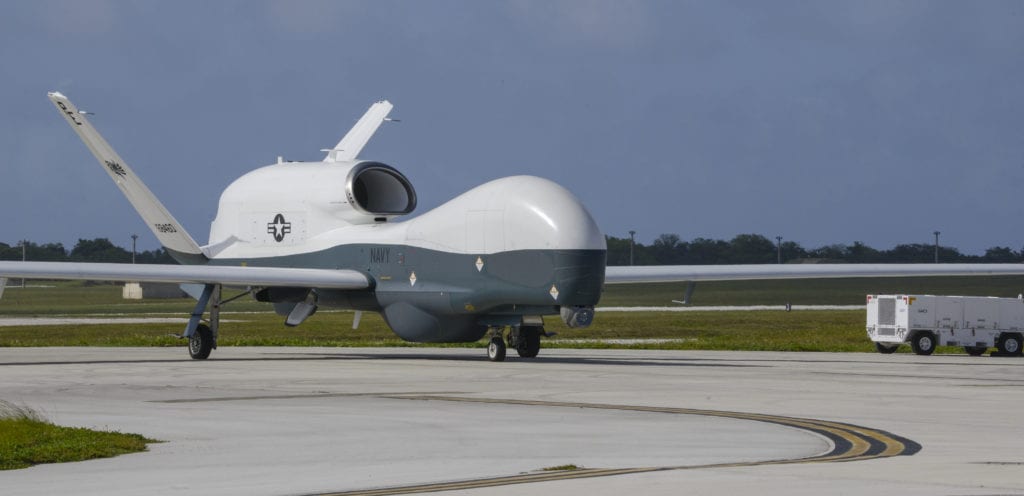
ARLINGTON, Va. — The admiral in charge of developing the Navy’s unmanned aerial vehicles said the MQ-4C Triton UAV is doing well a more than a year into its first operational deployment to Guam, as the Navy looks to prove operations at other locations.
Unmanned Patrol Squadron 19, the Navy’s first Triton squadron, deployed two MQ-4Cs to Guam in January 2020 to establish Early Operational Capability, providing surveillance for the U.S. 7th Fleet and also exercising the logistics train that will support future deployments.
“Triton is doing very, very well,” said Rear Adm. Brian Corey, program executive officer for Unmanned and Strike Weapons, speaking April 14 at the Unmanned Systems-Defense webinar of the Association for Unmanned Vehicle Systems International. “In fact, it’s doing better than we expected in Guam.
“We just finished a two-hour review with the Navy’s Air Boss, Vice Adm. [Kenneth] Whitesell, on how Triton is doing,” Corey said. “First off, anyone that has operated an air force knows that airplanes work and then they break. We have an air force of two [Tritons] and we put Triton out there [Guam] with Early Operational Capability, knowing that we didn’t have a fully fleshed-out set of depot-level maintenance and that sort of thing.
“So, we have had some amazing success here over these last several months,” he said. “We got over there, we were able to fly, we were able to interact in the airspace until we could fly in the entire Pacific region, until we got cooperation from our partners.
“We are delivering the products that Triton is intended to deliver to the 7th Fleet and to the [Pacific] Fleet commander, he said. “We’re able to do that in the number of missions a month that they are looking for.”
Corey said the next operational step for the Triton is “to prove that we can operate somewhere other than Guam and we’ll be working on that through the fall while we finish up IFC 4 [Integrated Functional Capability 4], the follow-on capability for Triton.”
- Insitu Going Strong at 30, Focusing on Maritime Operations - April 8, 2024
- Navy Awards Boeing Additional Funds for MQ-25 Drones for Testing - April 3, 2024
- Benign 4th Fleet AOR Useful for Unmanned Vehicle Operationalization, Admiral Says - March 27, 2024






